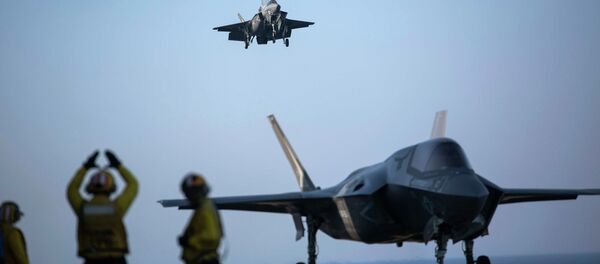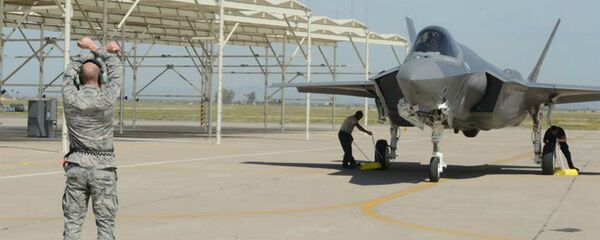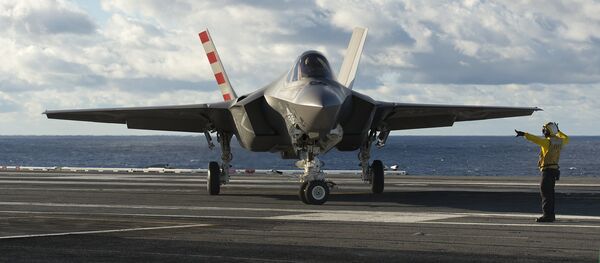In order for the Navy to officially say that the F-35C is ready for combat missions, it must have Block 3F software systems online. The F-35Cs Block 3F update, however, is actually being held up by the Pentagon, which has postponed Block 3F testing and evaluation until the fall of this year, meaning that spring 2019 is likely the earliest point at which the Navy could actually send the F-35C on missions.
Block 3F software is a vital component needed for the F-35 to be able to release its full arsenal of payloads in addition to its 25mm internal cannon. Without Block 3F systems, the aircraft is not mission-capable.
"The whole F-35 enterprise's [Initial Operations Test and Evaluation, IOT&E] starts in September, so it's not Navy's F-35C that's holding up IOC, it's that we're tied to IOT&E and need to see the demonstration and the capabilities. We need to really see the 3F capability demonstrated in IOT&E and there's just not going to be enough time to see enough of that before February 2019," Rear Admiral Dale Horan told USNI News on Thursday.
"IOC is capability and event-driven, not calendar driven. The Navy understands that the threshold and objective dates, August 2018 and February 2019, are at risk due to a delay in the IOT&E schedule," the admiral noted.
Nevertheless, it is possible the Navy will gather enough information during that window for the F-35C to reach initial operational status within the late-2018 to early-2019 window, Horan said. The officer also expressed confidence that the planes would still be ready for their first expected deployment in 2021.
The Block 3F software has proven to be quite an obstacle for the F-35 program. Initially slated to be completed in 2017, contractor Lockheed Martin informed the government last November that Block 3F development would be finished in 2018 at the earliest. Just four months earlier, Lockheed had assured the Defense Department that Block 3F development would be finished by the end of 2017.
When announcing the delay in November, Lockheed said that Block 3F software development would wrap up in February 2018.
The Government Accountability Office, an independent watchdog, anticipated that the extra time Lockheed needed was inadequate. Instead, GAO predicted in an April 2017 report that Block 3F development wouldn't be done until May 2018 — and that extra costs to develop the software would tally more than $1.7 billion.
GAO further anticipated that Block 3F sluggishness would have ripple effects across the F-35 program as a whole. "These delays could affect the start of the F-35's initial operational test and evaluation [and] postpone the Navy's initial operational capability," GAO noted.
For its part, the Navy has been busy conducting naval aviation drills with the F-35C, even if it lacks a robust weapons complement. On Wednesday, Sputnik News reported that the F-35C recently conducted more than 100 flights from the aircraft carrier USS Abraham Lincoln.





